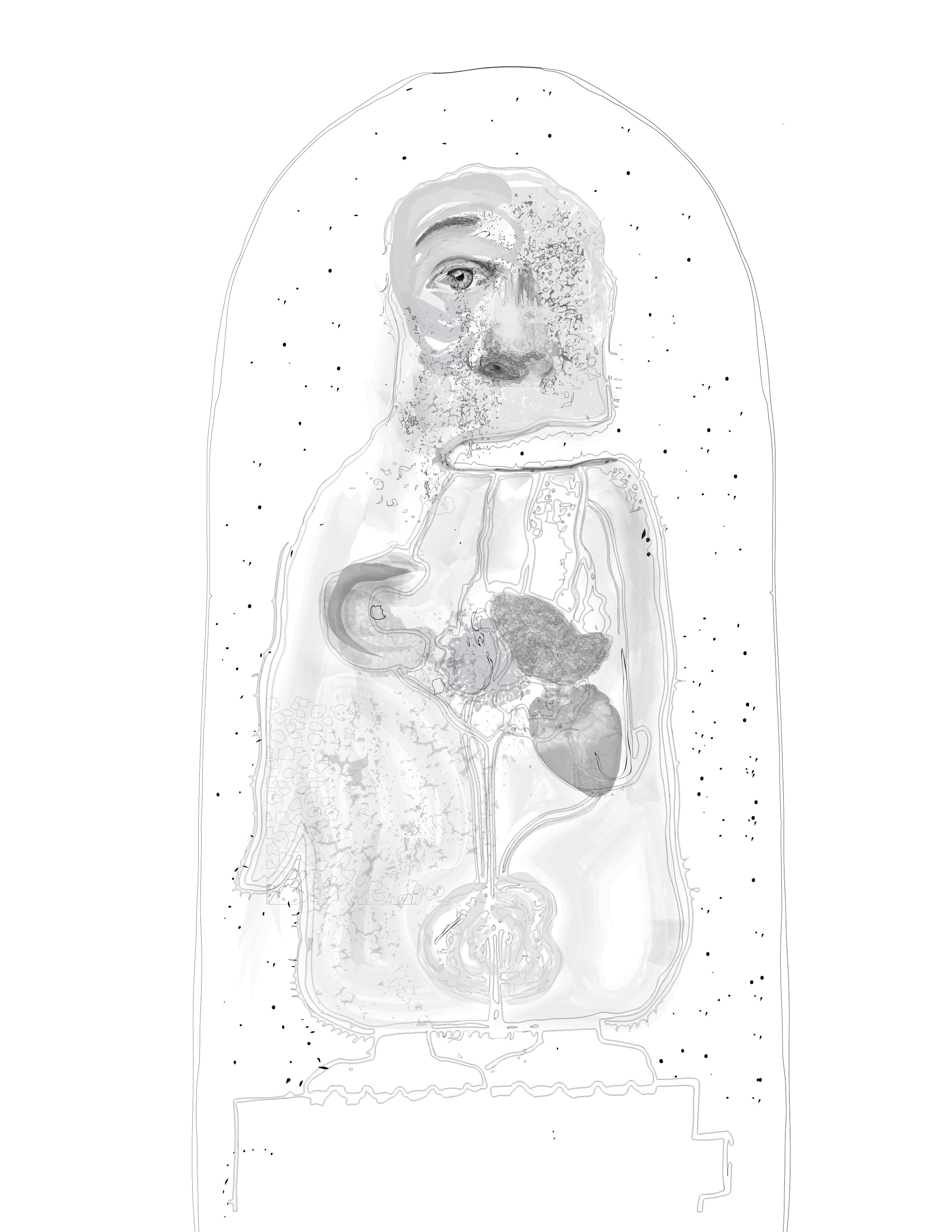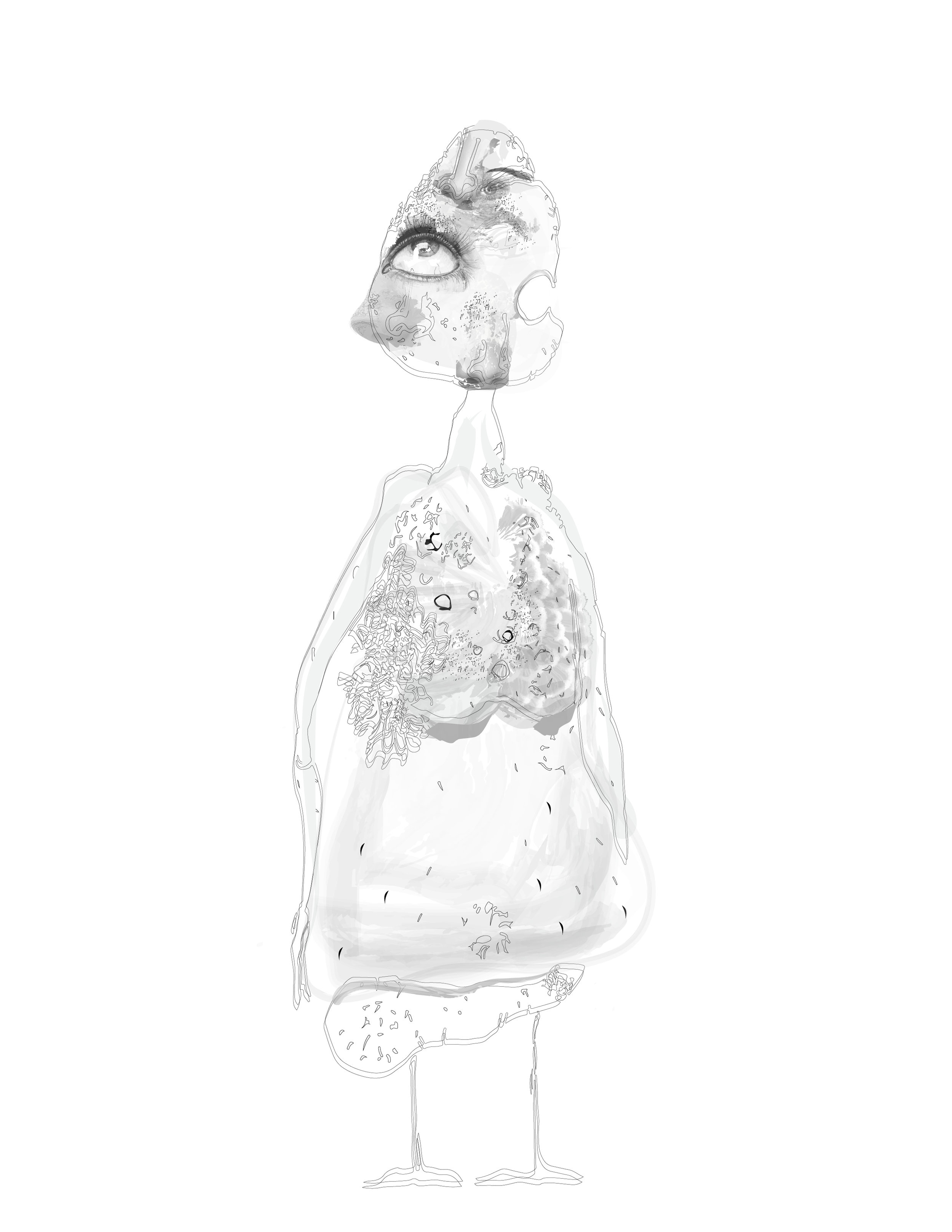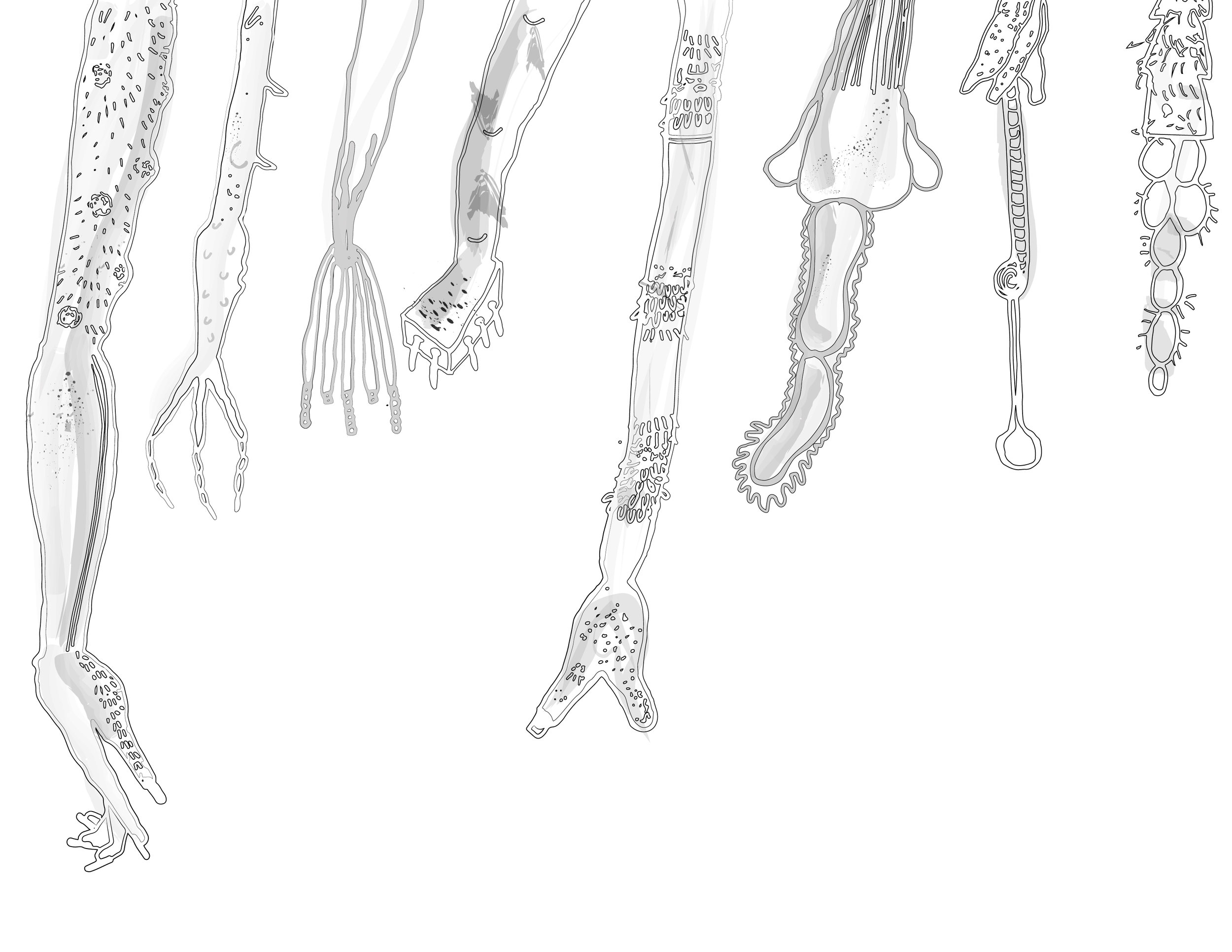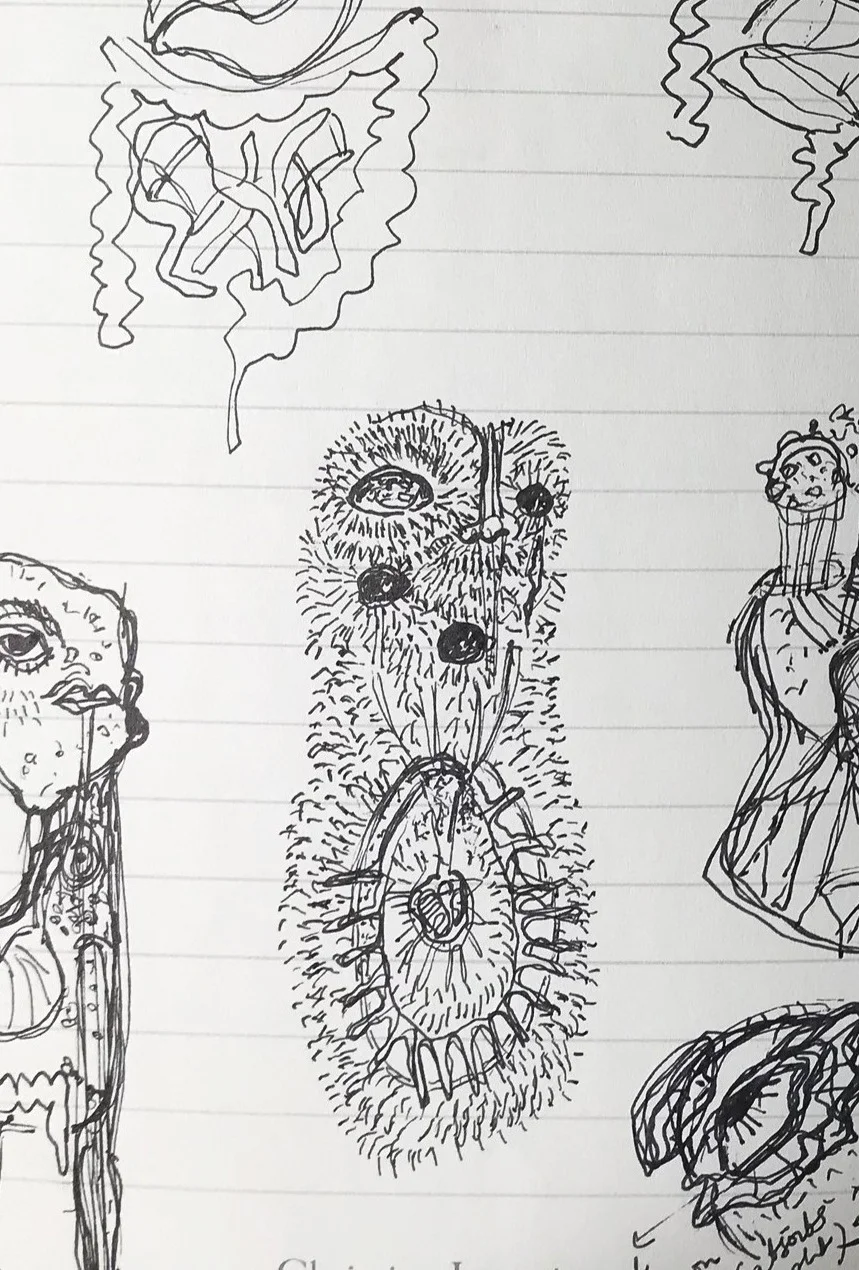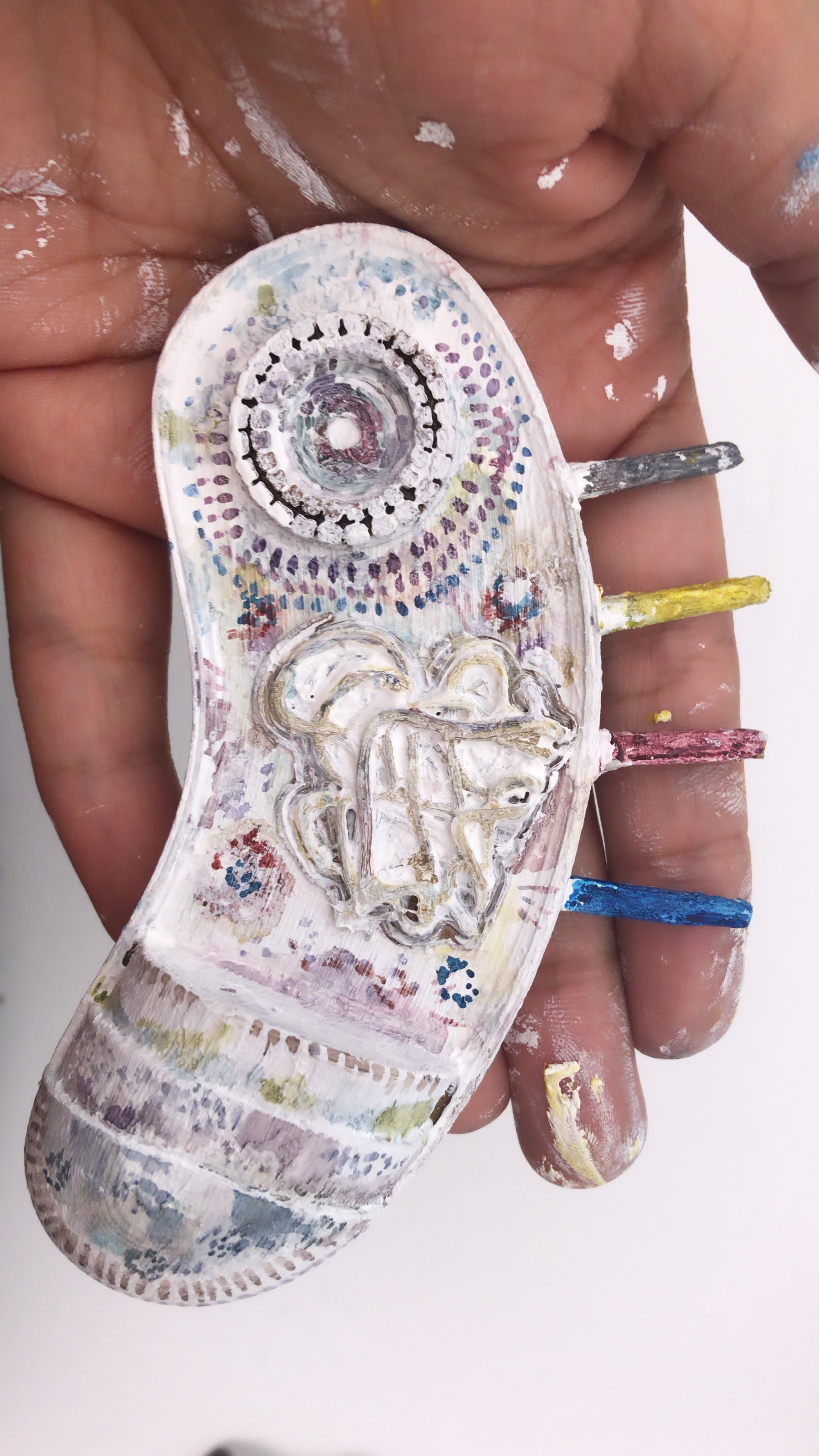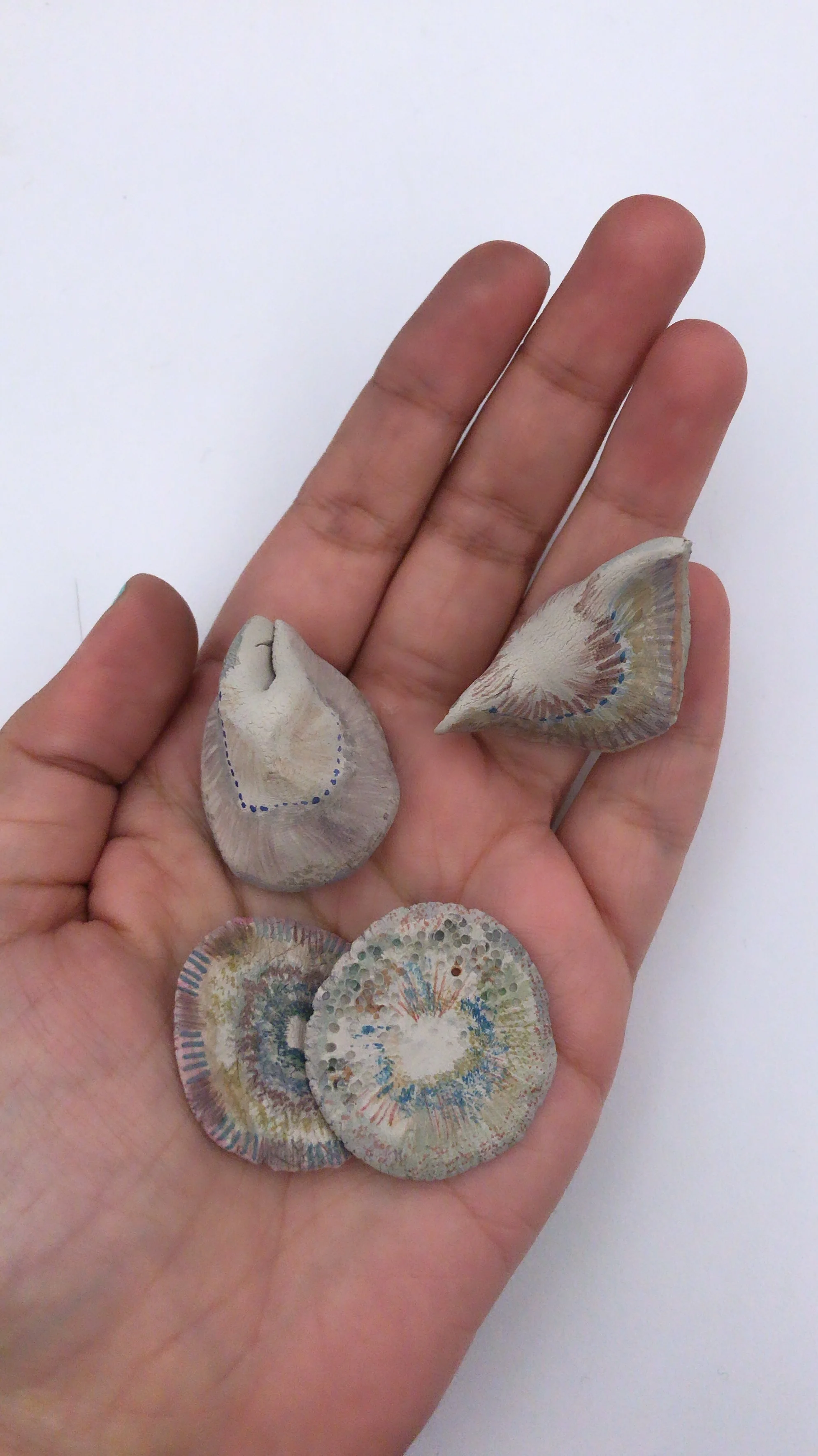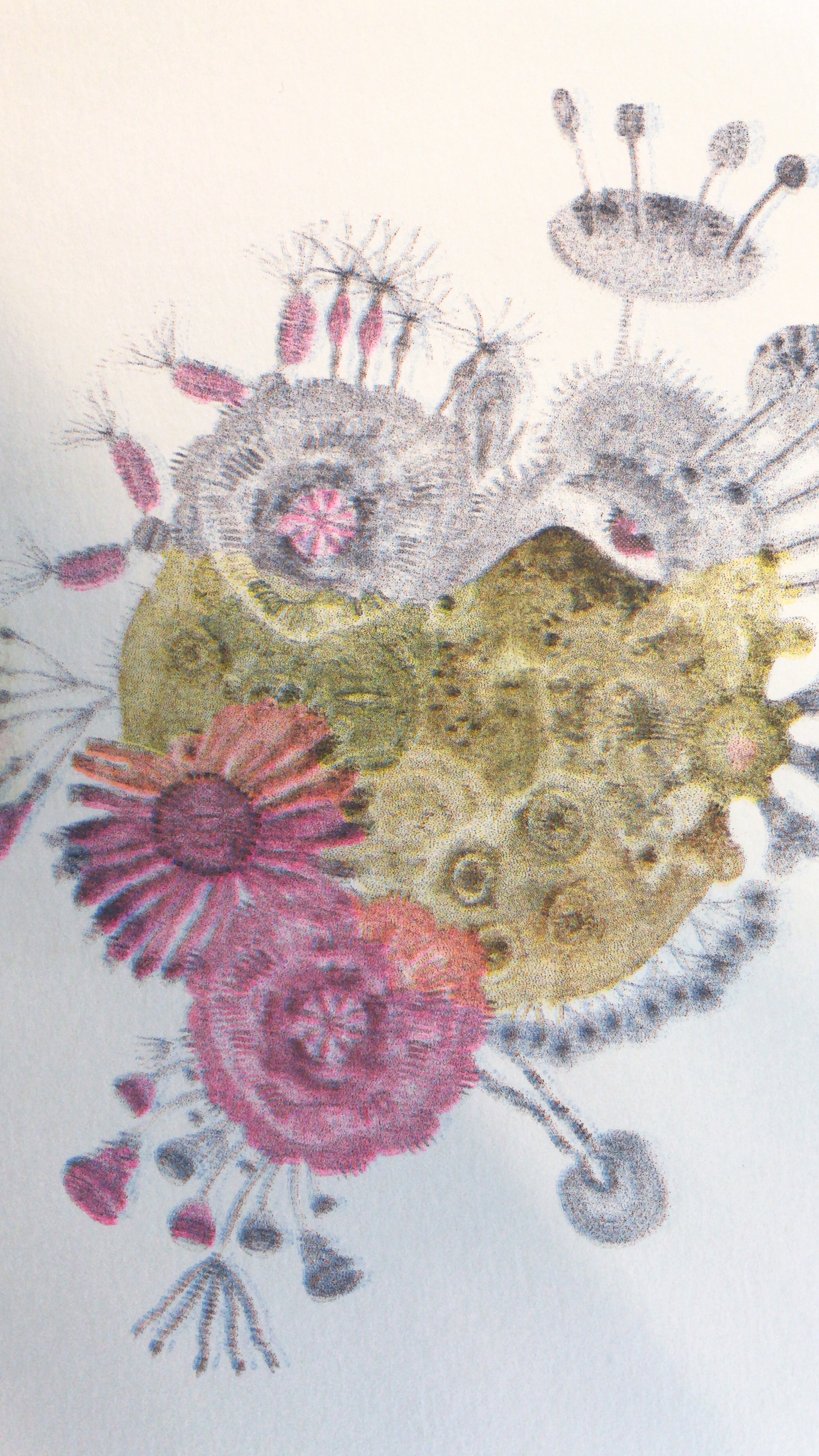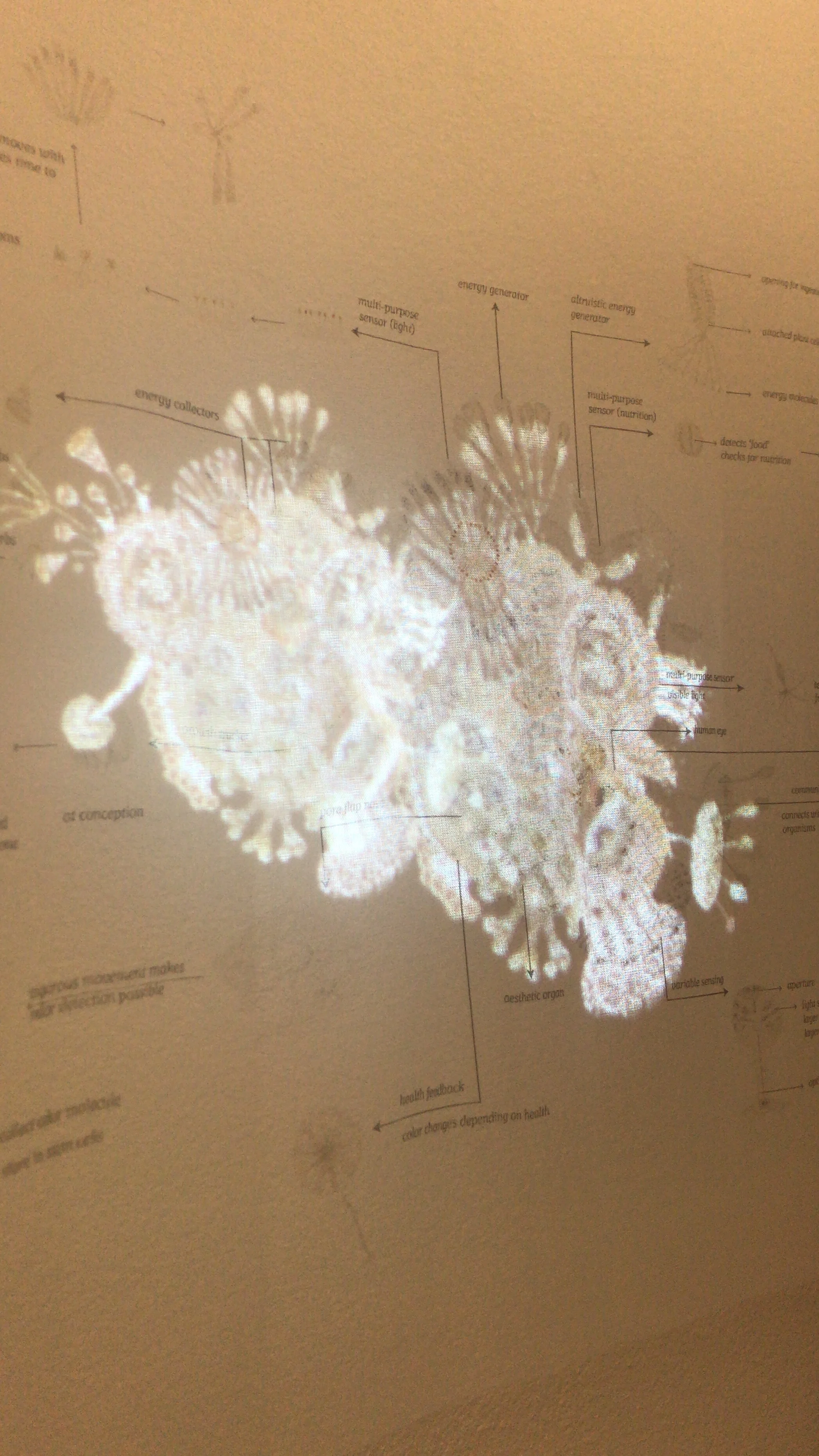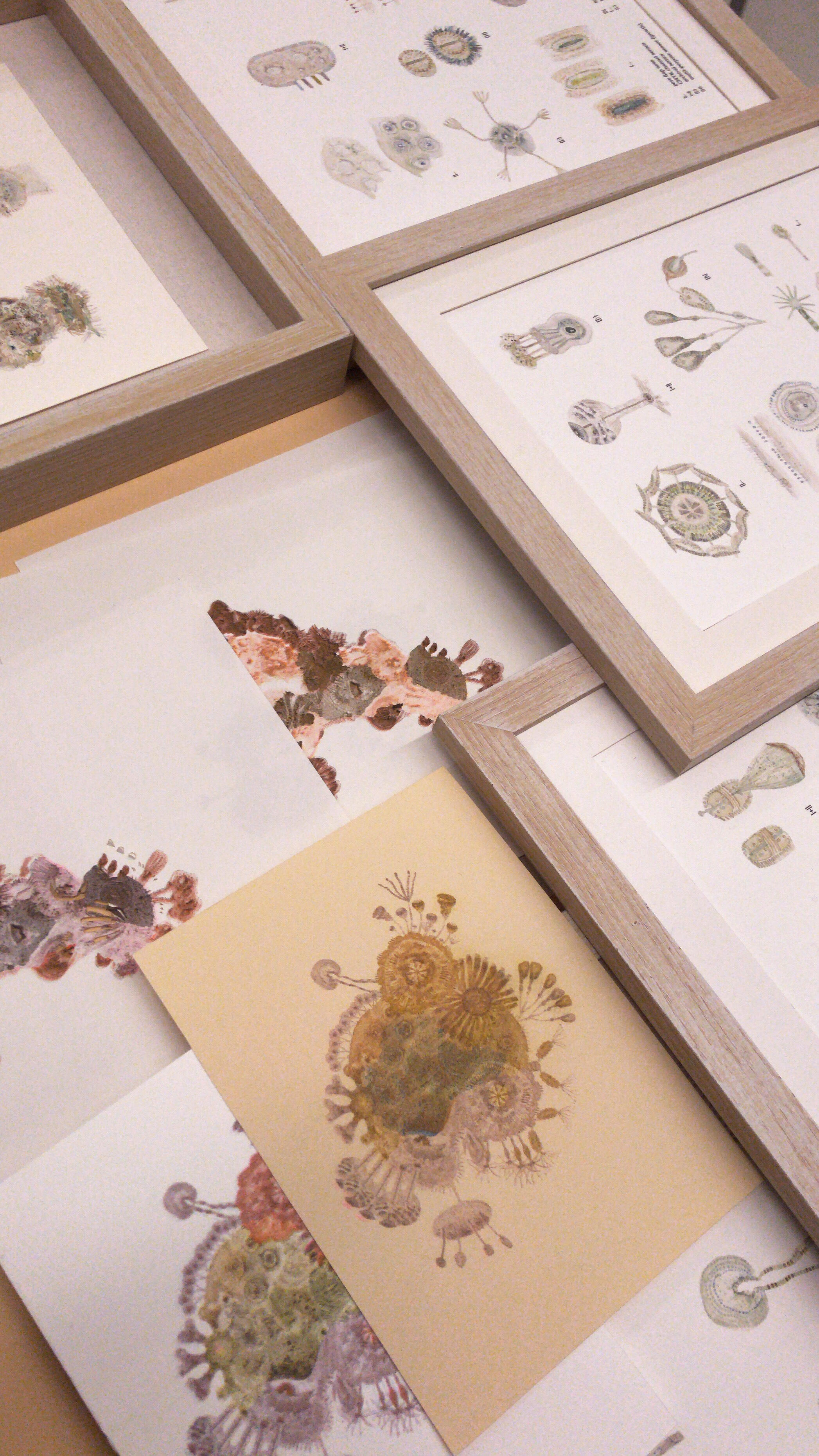What If Evolution Was Driven By Poetry?
Keywords: Speculative design, Illustration, BioArt
Tools: Watercolor, Adobe Photoshop, Risograph Printer, Laser Cutter
Can genetic modification stimulate the possibility of incorporating more poetry into the everyday? Could features be chosen and developed, not driven by principles of optimization, but instead, by whether they let one experience the environment differently?
Recent developments in gene editing have led to a rise in experimentation with human embryos. While this emerging technology holds tremendous potential, the common narrative surrounding it is full of designer babies with "aesthetic traits”, or augmented human beings with super sensing abilities. We seem to be heading towards a world where bioengineering will alter the human body in ways that make us faster, more efficient, or "better".
But what if genetic modification opened a gateway to a new world, one which prizes new experiences, new sensations, new ways of understanding and relating to one another?
Eka is an exercise in imagination, an alternate world, where modular organisms have "sensing organs" implanted in their bodies in ways that let them interact with their surroundings and each other in unconventional ways.
The People Of Eka
Let me give you a tour of a very special archive. One, which hasn't been made public yet. These artifacts were retrieved from crevices in the deep sea. They had to be deciphered, and although we have incomplete information, we can say with certainty that these come from a place called Eka. Several scientists, microbiologists, geologists, and anthropologists spent years trying to decrypt what these strange drawings meant. Initially believed to be a representation of underwater creatures, now there is evidence that suggests that these might be the modular building blocks of the Eka being.
It is believed that the Eka being has a porous, egg shaped skeletal structure on which different sensing organs can be implanted. Following are the classes of sensing organs with brief descriptions for each.
||.. Sensing organs for those who believe that death is a part of life
These include sensors that shrivel/ decay to indicate that the input (biomolecules/ light/ water/ wind) is compatible with the body chemistry of the organism, energy generators that use organic as well as inorganic waste as raw material, a tracker (similar to Fitbits in the human world) that monitors the decay and degeneration of cells, as well as salvaged organs (from dead Eka organisms) that act as aesthetic add-ons.
|+|| Sensing organs for those who like the time when one can reclaim the land from winters
Some sensors in this category are the pore flap nose, where the being would have to jump, twist, or run to activate olfactory sensing, CMYK channel sensors that lets one see the world through different colored filters, archival sensor that lets one store snapshots of different environments (smell, sight, sound, touch, sensation), multi purpose sensors that bloom or become brightly colored to indicate whether the input is 'right' for the organism, as well as energy generators that utilize the wind (the fibres on the surface align in one direction to form a connected web, where the energy is harnessed and stored).
[[:} Sensing organs for those who enjoy the process more than the outcome
Examples of this class would be movement organs (that serve no other purpose than to let one experience the sensation of movement), slow image sensors (that take a very long time to form the image), pattern collectors (these store the patterns and textures in formations resembling growth rings in trees), growth trackers (that inefficiently capture growth by showing data that may be years old and hence no longer relevant), daylight reflectors (that change color to reflect the sky), and, organic intruders that are like vaccinations in the human world- here they are designed to produce reactions that cause pain or discomfort in the being.
{}{} Sensing organs for those who like the whole but not what makes it
These include energy generators that use audio waves (recommended for those who like crowds and busy places), variable scale sensors that lets the individual experience the world at varying scales- from the microscopic to the planetary, bundle sensors that do not locate individual things in one's field of view but instead show groups of objects, cumulative odor sensors, altruistic energy generators (that produce energy for other beings), and communication protocols that let one stay connected with others and share the sensation of their presence.
Any creature in Eka could not be created arbitrarily. There was a lot of research and planning that presumably went behind it. The intent for conception of different creatures remains unclear to date.



